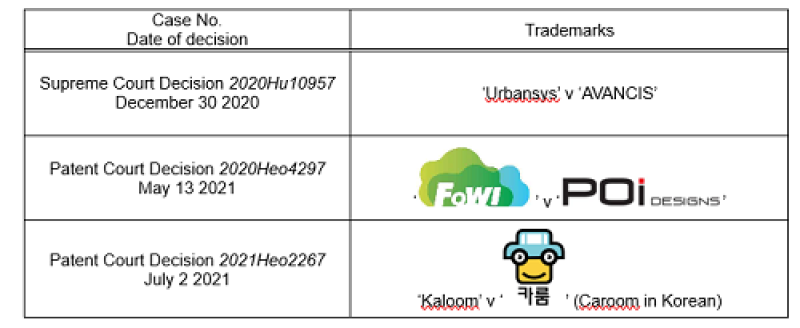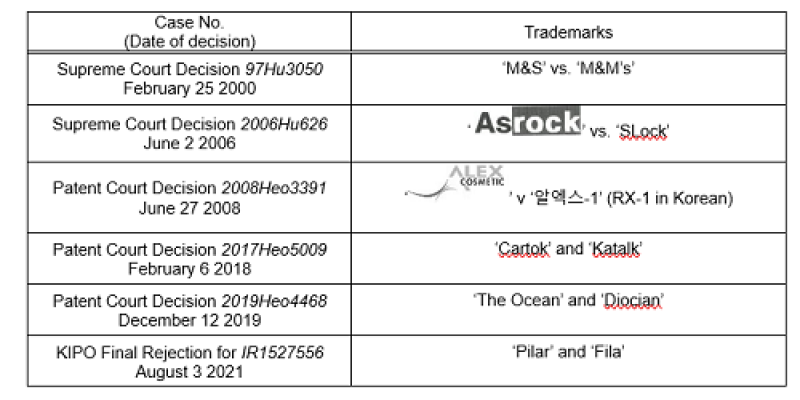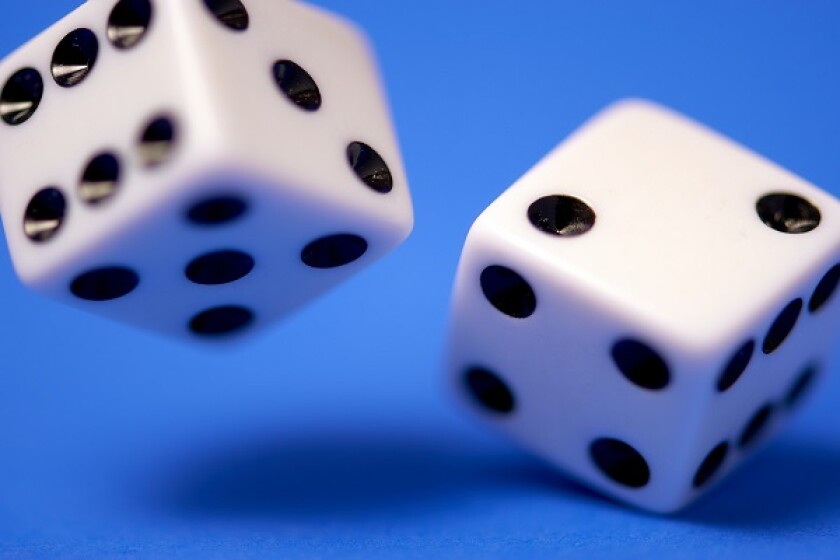Reflecting the changes in the current market situation, it is noteworthy that Korean courts’ recent cases considered visual appearance more important than sound in determining the similarity of trademarks.
Jurisprudence in determining similarity of trademarks
When determining the similarity of marks, similarly to in other jurisdictions, Korean courts as well as the Korean Intellectual Property Office (KIPO) compare the marks in their entirety, including appearance, sound, and connotation factors.
Even if the marks share any identical factors, but there is no likelihood of confusion as to the source of goods for the marks, the marks would not be considered as confusingly similar to each other. Conversely, even if there are different factors, if the sound or appearance is similar, and thus, there exists likelihood of confusion, the marks compared should be considered as similar trademarks. In determining the likelihood of confusion due to the similarity of the marks, trading circumstances regarding the goods shall be considered.
Sound - once the most important factor
Previously, Korean courts had ruled that ‘sound’ is the most important factor in determining the similarity of the marks considering the trading circumstances to advertise trademarks and purchase the goods through voice media such as broadcasting or telephone (Supreme Court Decisions 97Hu3050, February 25 2000, 96Hu344, September 6 1996).
This jurisprudence continued until recently, and the hurdles in registration were quite high for trademarks with identical or similar sounds, even when they had dissimilar factors in appearance or connotation.
As examples, Korean courts ruled that the trademarks for ‘Asrock’ and ‘Slock’, ‘Alex Cosmetic & device’ and ‘RX-1’ in Korean transliteration, ‘Cartok’ and ‘Katalk’, ‘The Ocean’ and ‘Diocian’ are similar to one another due to the similarity in sound (Supreme Court Decision 2006Hu626, June 2 2006, Patent Court Decisions 2008Heo3391, June 27 2008, 2017Heo5009, February 6 2018, 2019Heo4468, December 12 2019).
Similarity test using Korean pronunciation
With regard to trademarks in foreign words other than Korean, the marks were compared with their phonetic equivalent in Korean. In Korean, ‘B’ and ‘V’ are written using the same Korean letter, even though the actual sounds thereof are slightly different. Likewise, the pairs ‘(soft) C’ and ‘S’, ‘F’ and ‘P’, and initial ‘L’ and ‘R’ are often respectively written using the same Korean letters.
Therefore, in theory, ‘boys’ and ‘voice’ that have the same or nearly identical pronunciation in Korean, can be regarded as similar trademarks according to Korean practice. In fact, the trademark ‘Pilar’ (No.1527556), filed by a US company for clothing and footwear, was actually rejected in Korea on the basis of similarity with the prior marks ‘Fila’ and ‘Fila in Korean’. In that case, both ‘Pilar’ and ‘Fila’ can be transliterated identically in Korean. The fact that the two marks have clearly dissimilar concepts was not reflected in the examination results.
Recent changes in similarity criteria
Recently, the Korean Supreme Court overturned the original decisions made by the Patent Court and the Intellectual Property Tribunal and Appeal Board (IPTAB) of KIPO, and remanded the case to the lower court. In that case, Supreme Court ruled that the trademark ‘Urbansys’ is dissimilar to ‘AVANCIS’, notwithstanding the identical Korean pronunciations of the marks, in view of dissimilar appearances and meanings thereof (Supreme Court Decision 2020Hu10957, December 30 2020).
In the Supreme Court judgment commentary, the judicial researcher commented that jurisprudence that was valid at some point in the past may become far removed from reality, necessitating caution when citing past jurisprudence. Thus, rapid changes in market circumstances shall be reflected in the determination of similarity of the marks.
These days, compared to when Supreme Court decision 97Hu3050 is issued, there has been a significant increase in the importance of visual advertisements and methods of transaction such as online stores, social media, and YouTube, where these are accompanied by video or images, and thus, it is necessary to take into account the importance of ‘visual factors’ in determining of the similarity of the marks.
Accordingly, although the importance of phonetic factors in word marks cannot be denied, these may not be absolute criteria. Rather, a similarity test should be made carefully taking all factors into account in view of the general consumers’ perception, so that a reasonable decision can be made for the specific case. In particular, for marks using non-Korean words, in addition to simply comparing the transliterated sounds of the marks as in Korean word marks, the improvement in foreign language skills of the Korean consumers as part of a recently globalised society shall also be considered.
Three noteworthy cases giving more weight to visual appearance
As shown above, in the 2020Hu10957 decision, the trademarks ‘Urbansys’ and ‘AVANCIS’, which are pronounced the same in Korean, were judged to be dissimilar in consideration of differences in appearance and concept.
After the Supreme Court’s 2020Hu10957 decision, the Patent Court subsequently held that the trademarks for ‘Fowi & device’ and ‘Poi Designs’ and those for ‘Kaloom’ and ‘Caroom & device’ are dissimilar to each other (Patent Court Decisions 2020Heo4297, May 13 2021, 2021Heo2267, July 2 2021).
In the above cases, the Patent Court assigned more importance to visual appearance than to the identical sounds of the marks thereof, in consideration of the recent sales and purchasing channels through visual media, such as smartphones and tablets, given the widespread internet penetration.
The above cases maintain the basic jurisprudence in determination of the similar marks, but clearly show the recent trend toward considering the visual appearance in view of realistic consumer perceptions.
In accordance with the development of similarity criteria in recent cases, it is expected that more reasonable and rational decisions will be made in determination of the similarity of the marks, reflecting specific market circumstances. Accordingly, it is also expected that more trademark applications may be saved from rejection on the basis of similarity of the marks.
Trademarks found to be dissimilar

Trademarks found to be similar

Min Son, PhD
Managing partner, Hanol IP & Law












